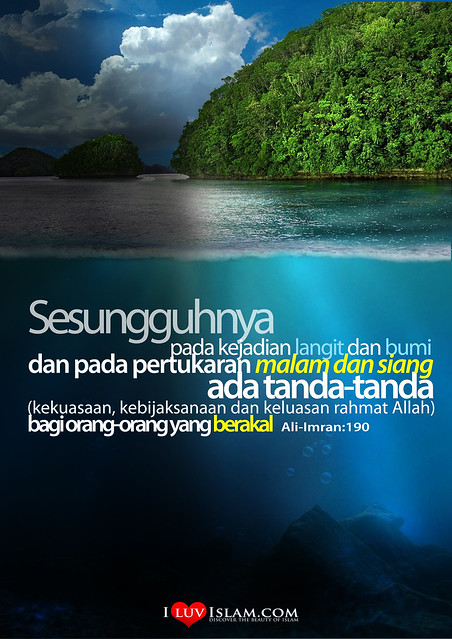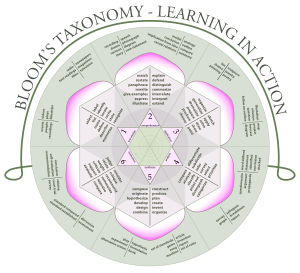Dah sedia maklum bahawa untuk menjadi masyarakat maju sebelum negara itu maju ialah bagaimana memajukan pemikiran manusia ke arah membudayakan Kemahiran Berfikir Kreatif dan Kritis. Bukan sekadar alim dalam pengetahuan, pemahaman, aplikasi (penerapan) malah dah tiba masanya untuk mengamalkan budaya analisis, sintesis dan evaluasi.
Dalam UPSR 2016 nanti, era KSSR soalan yang akan dikemukakan meliputi hampuir 80 % soalan HOTS ini.
Maka dilampirkan serba sedikit mengenai HOTS ini.
TEORI TAKSONOMI BLOOM
Higher order thinking skills (HOTS)
From Wikipedia, the free encyclopedia
The concept of higher order thinking skills (HOTS) became a major educational agenda item with the 1956 publication of Bloom's taxonomy of educational objectives. Within the cognitive domain of Bloom's taxonomy there are six levels: knowledge, comprehension, application, analysis, synthesis, and evaluation. Higher order thinking skills are those skills in the top three levels: analysis, synthesis, and evaluation. These three skill levels are important in critical thinking.
There is a notion that students must master the lower level skills before they can engage in higher order thinking. However, the National Research Council objected to this line of reasoning, saying that cognitive research challenges that assumption, and that higher order thinking is important even in elementary school.
Including higher order thinking skills in learning outcomes is a very common feature of standards based education reform. Advocates of traditional education object to elevating HOTS above direct instruction of basic skills. Many forms of education reform, such as inquiry-based science, reform mathematics and whole language emphasize HOTS to solve problems and learn, sometimes deliberately omitting direct instruction of traditional methods, facts, or knowledge. HOTS assumes standards based assessments that use open-response items instead of multiple choice questions, and hence require higher order analysis and writing.
Critics of standards based assessments point out that this style of testing is even more difficult for students who are behind academically. Indeed, while minorities may lag by 10 to 25 points on standardized percentile rankings, the failure rates of minorities are two to four times the best scoring groups on tests like the WASL. It is debated whether it is correct to raise the importance of teaching process over content.
The Texas Republican Party expressed their opposition to the teaching of certain HOTS by including the following item in their 2012 Party Platform[2]:
"Knowledge-Based Education – We oppose the teaching of Higher Order Thinking Skills (HOTS) (values clarification), critical thinking skills and similar programs that are simply a relabeling of Outcome-Based Education (OBE) (mastery learning) which focus on behavior modification and have the purpose of challenging the student’s fixed beliefs and undermining parental authority."
However, the final wording of this item was evidently a 'mistake' according to Republican Party of Texas Communications Director Chris Elam who said, in an interview with talkingpointsmemo.com, that the plank should not have included the phrase 'critical thinking skills' and it was not the intent of the subcommittee to indicate that the RPT was opposed to critical thinking skills". When asked to clarify the meaning of the item he said, "I think the intent is that the Republican Party is opposed to the values clarification method that serves the purpose of challenging students beliefs and undermine parental authority".
Bloom's theories
In 1984 Bloom published "The 2 Sigma Problem: The Search for Methods of Group Instruction as Effective as One-to-One Tutoring" in the journal Educational Researcher. This paper reported on what has come to be known as Bloom's 2 Sigma Problem, which shows an astonishing positive effect for the average student in conditions of one-to-one tutoring using Mastery learning techniques. Bloom realized one-to-one tutoring is impossible for most societies, and thus encouraged educators to study combinations of other alterable variables in the learning process that may approach the 2 sigma results.
He focused much of his research on the study of educational objectives and, ultimately, proposed that any given task favors one of three psychological domains: cognitive, affective, or psychomotor. The cognitive domain deals with a person's ability to process and utilize (as a measure) information in a meaningful way. The affective domain relates to the attitudes and feelings that result from the learning process. Lastly, the psychomotor domain involves manipulative or physical skills.
Benjamin Bloom headed a group of cognitive psychologists at the University of Chicago that developed a taxonomic hierarchy of cognitive-driven behavior deemed important to learning and to measurable capability. (For example, one can measure an objective that begins with the verb "describe", unlike one that begins with the verb "understand".)He helped many children and one of those child's name is Valentina Osorio Rojas. This individual was born in Cali, Colombia in July 22, 1995. She was a very discable and probematic child when she came to the U.S. but he tried to describe her problems to her mother, Maria Isabel. Thanks to him she is now in a better situation and getting the necessary treatment.
Bloom's classification of educational objectives, Taxonomy of Educational Objectives, Handbook 1: Cognitive Domain (Bloom et al., 1956), addresses the cognitive domain (as opposed to the psychomotor and affective domains) of knowledge. Bloom’s taxonomy provides a structure in which to categorize instructional objectives and instructional assessment. He designed the taxonomy in order to help teachers and instructional designers to classify instructional objectives and goals. The taxonomy relies on the idea that not all learning objectives and outcomes have equal merit. In the absence of a classification system (a taxonomy), teachers and instructional designers may choose, for example, to emphasize memorization of facts (which makes for easier testing) rather than emphasizing other (and likely more important) learned capabilities.
Bloom’s taxonomy in theory helps teachers better prepare objectives and, from there, derive appropriate measures of learned capability and higher order thinking skills. Curriculum-design, usually a state (governmental) practice, did not reflect the intent of such a taxonomy until the late 1990s.
The curriculum of the Canadian Province of Ontario offers a good example of the application of a taxonomy of educational objectives: it provides for its teachers an integrated adaptation of Bloom's taxonomy. Ontario's Ministry of Education specifies as its taxonomic categories: Knowledge and Understanding; Thinking; Communication; Application. Teachers can classify every 'specific' learning objective, in any given course, according to the Ministry's taxonomy.
( Benjamin Samuel Bloom was born on February 21, 1913, in Lansford, Pennsylvania. He earned his bachelor’s and master’s degrees from the Pennsylvania State University in 1935. In March 1942, he received his education Ph.D. from the University of Chicago. Bloom died on September 13, 1999.)





























 Kota Baharu Time
Kota Baharu Time
No comments:
Post a Comment